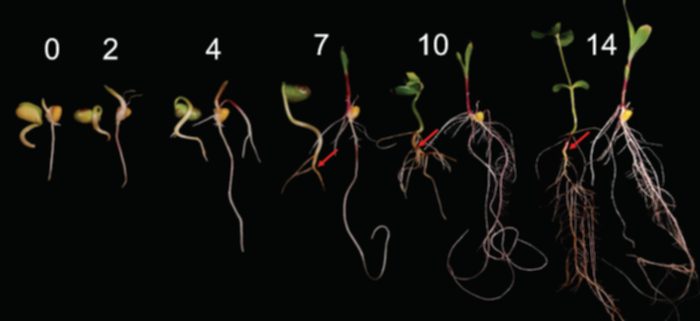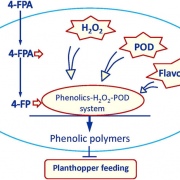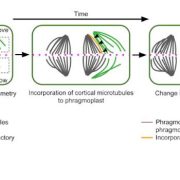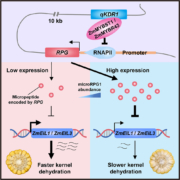An asymptomatic crop holds the clues for healthy roots
The Plant Cell
By Amy Baetsen-Young and Brad Day, Michigan State University
Background: Diverged plant species respond to microbial interactions through different processes, the outcome of which underscores plant immunity or susceptibility, including the programming of asymptomatic or symptomatic colonization. Specifically, many diverged plant species are colonized by the same fungi, but only few become symptomatic. For instance, root colonization of soybean leads to disease, but maize root colonization by the same fungus yields an observably healthy plant. Therefore, differentially-induced root responses between a monocot, maize, and eudicot, soybean, may underlie the process(es) enabling the development of symptomatic versus asymptomatic interactions between plants and pathogens. To explore such a hypothesis comparing fungal colonization of two distinct hosts, soybean sudden death syndrome provides an excellent model, as differing phenotypic host responses are prominent by monocot and eudicot hosts colonized by F. virguliforme.
Question: We asked how temporal gene expression patterns in roots differ between an asymptomatic monocot, maize, and a symptomatic eudicot, soybean, upon colonization by the same fungus, F. virguliforme.
Findings: We discovered that the expression of only 600 genes was altered in maize, whereas over 10,000 genes were switched on or off in soybean, in response to fungal colonization. Interestingly, a small subset of orthologous maize defense genes was upregulated at early timepoints in response to F. virguliforme compared to soybean. This suggests that earlier induction of immunity may play a role in tolerance of F. virguliforme by maize. In this vein, we uncovered transcriptional-based senescence-promoting regulation in soybean when compared to maize, suggesting F. virguliforme may have activated senescence during colonization of a symptomatic host.
Next steps: Important next steps include exploration of the molecular-genetic and biochemical networks associated with pathogen-induced root senescence.
Amy Baetsen-Young, Huan Chen, Shin-Han Shiu, and Brad Day. (2021). Contrasting transcriptional responses to Fusarium virguliforme colonization in symptomatic and asymptomatic hosts. Plant Cell http://bit.ly/3pxapTD










